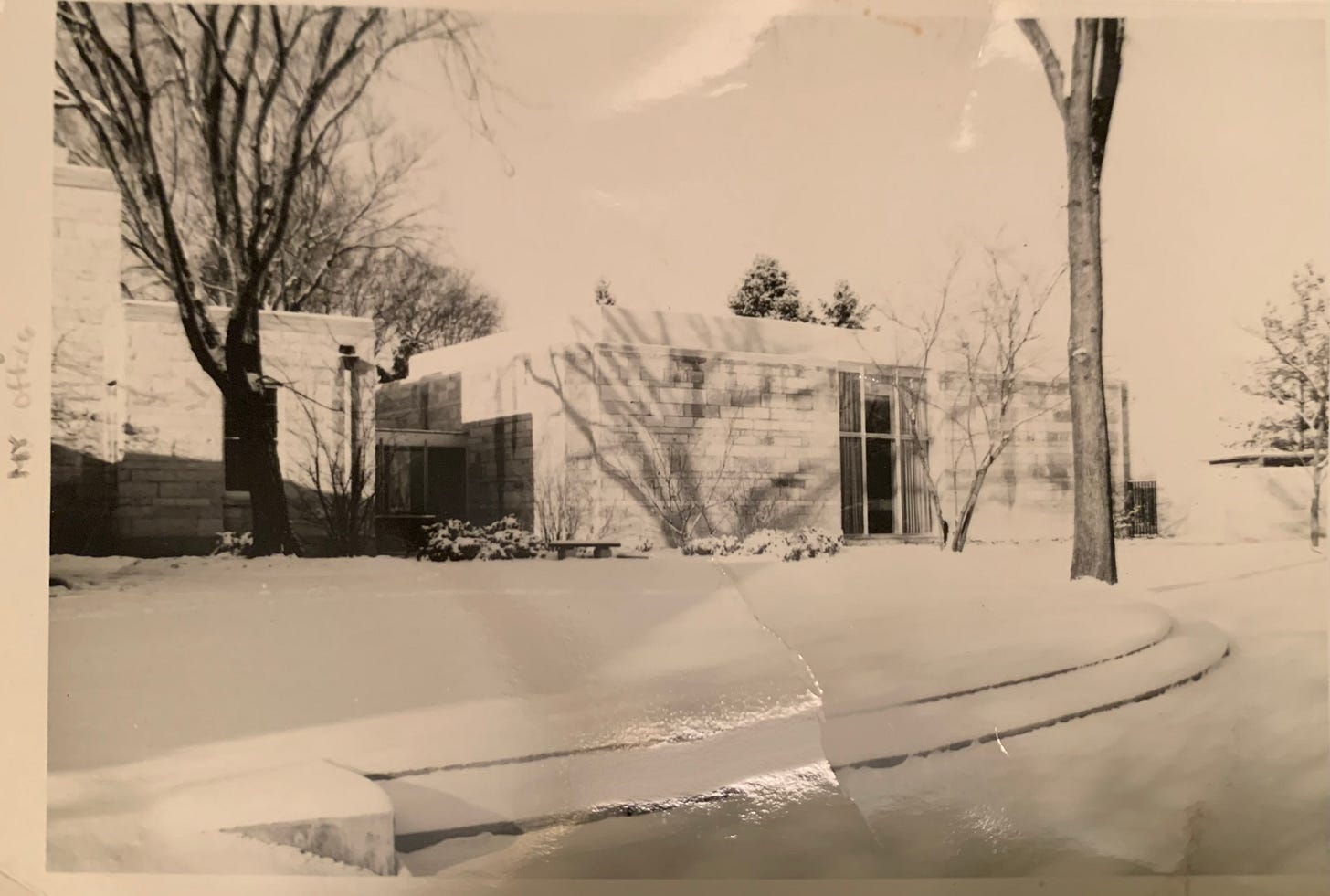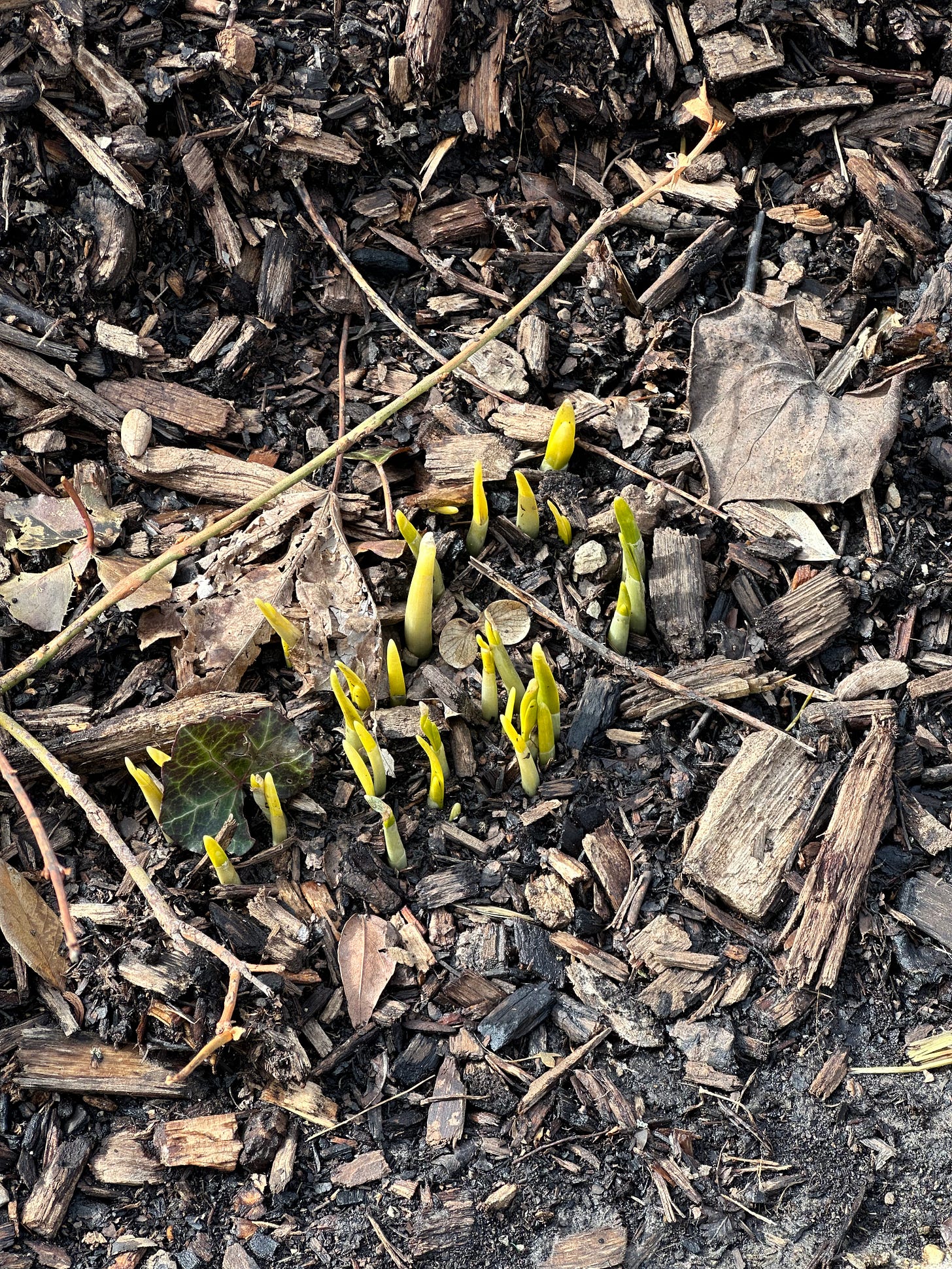Lessons from Winter Trees
How a Ginkgo and Redbud are teaching me to trust and Birches can inspire us to keep an eye out for beauty.
In a drought of inspiration, during a time of year when looking out the window only reminds one that we have yet to emerge from the depths of bleak winter, I had the thought to return to the first piece of my grandfather’s writing that I ever discovered: - Winter Beauty, from the Morton Arboretum’s February 1936 Bulletin of Popular Information. Remembering that this meander through the various aspects of trees that illuminate a dark time of year was written in February felt apt. It made me think that rather than wallow in the paralyzing grey of the beginning of a new year, I should make an active effort to explore the beauty my grandfather so passionately argued is out there during this month. I hoped doing so might reignite the creative spark I seemed to have lost in recent months.
Stuck inside my apartment for the day due to an illness flare, I ventured to the trees most readily available to me: the Ginkgo biloba and Redbud I’m experimenting with growing in containers on my balcony. Currently, not dissimilarly to myself, they are overwintering in the dark and receiving occasional deep drinks of water to help carry them through this period of rest.
Despite being in a rest cycle, the Ginkgo has quite prominent buds scattered along and at the terminal end of its single trunk. The Redbud’s aliveness, meanwhile, looks more in question, its dark bark with slight striations hiding entirely whatever is going on underneath. As I discovered doing the same last year, overwintering trees is an act of trust. Observing the quiet trunks and branches, one wonders whether this time of low light and water has done its job and provided the tree with the respite it needs to survive or whether it has succumbed to a lack of resources. The result is only clear in the coming months, when, hopefully, buds of life spring suddenly from those seemingly lifeless twigs.
The next day, during my time volunteering at the Sterling Morton Library, I came across back-and-forth correspondence between my grandfather and the F. W. Kelsey Nursery Company from around this time of year in 1930, almost a century ago. He was ordering birch trees: 500 Betula papyrifera (Paper Birch) and 350 Betula lutea (Yellow Birch). Admittedly I do not typically find these receipts and order acknowledgments the most thrilling inclusions in my grandfather’s papers, but coming across this order for beautifully barked Birch trees after spending time mulling over the wonder to be found in winter was striking. I thought back to previous years when I wandered amongst the Arboretum’s Birch collection and wondered if any of those plantings were holdouts from this 100-year-old order. Regardless, the Birch plantings on the west side of the Arb serve as quite the reminder that even during the starkest of seasons, trees can remind us of the splendor that exists all around.
If you’d like to receive deep dives into my grandfather’s work at the Morton Arboretum in your inbox, along with more short musings on nature and life, consider subscribing!
If you have topics you’re interested to hear more about or feedback for me, please feel free to let me know in the comments.
If you like what you’ve read so far, sharing Bulletin of Remarkable Trees with your friends would help a whole lot!








I remember we had a paper birch in my front yard at my parents house, and somehow it always seemed more vibrant or in its element during the winter months. Maybe its the gray bark on the white snow and gray sky but it just seemed to fit. Thanks for sharing!